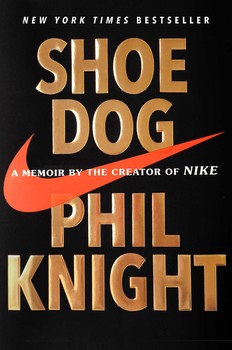
It’s tough to see a former client fall upon hard times. Such is the case for me with the predicted closure of ITT Technical Institute.
You may have heard, this for-profit chain of tech schools has run into trouble with U.S. Department of Education. Translation: No more government funded student loans. Without access to these loans and with additional sanctions that have been imposed, this once leading vocational school for hundreds of thousands of non-college bound kids and older adults seeking a new career will likely close for good.
When I worked as the creative director for the ad agency on the account, we knew that the ITT Tech (International Telephone and Telegraph) brand and its distinctive block letter logo still carried a lot of positive brand equity as an early technical innovator, going back to its founding in 1920. It has always commanded instant brand recognition and respect around the world, putting it in the same league as other early tech industry brands such as GE (General Electric) or Western Electric (now Lucent Technologies). ITT Tech started out in 1946 as Educational Services, Inc. and was a wholly owned subsidiary of ITT Tech until its IPO in 1994.
Over the course of its history, the tech school chain grew to approximately 130 campuses across the US. Driving that growth was our client’s understanding and appreciation for aggressive marketing in the cities where it had schools. Our mantra was simply to “Get Asses in Classes.” To achieve that, and long before the Internet, mobile delivery platforms and social media, we utilized the transformative power of television. More than any other media, along with 800-number call centers, this proved to be a sophisticated direct response strategy to feed the school’s never-ending appetite for new applicants.
Always the chief “antagonist” in our commercials was the “4-year liberal arts college.” Throughout many of these 30-second and 60-second mini-life dramas (following the formula of identification + self-realization = discovery + call to action) we reached our target on daytime TV reruns like “Gilligan’s Island.”
My job was to direct the creative and TV production for these spots to pitch ITT Tech’s exciting curriculum offerings like electronics, drafting, auto mechanics or office management careers, and position against boring and pointless academic courses served up in a college lecture halls. We promised an exciting, rewarding, hands-on lab experience that should naturally lead to an exciting, rewarding, hands-on career. In the mind of our “Gilligan’s Island” rerun fan, this was a slam-dunk no-brainer.
We produced TV campaigns in waves, with each spot carefully scrutinized and scripted per formula to elicit the most phone rings. Leads generated by our commercials were tracked every week in CPL (Cost Per Lead) client/agency meetings, where spots we might love in the creative department would die an ignominious death on the altar of lead-generating efficiency. But one thing we all agreed on: nothing made the phone ring like a new TV campaign. As a result, we were constantly in production. ITT Tech was, as we liked to call them around the agency, a “lead junkie,” and we were its quickest and most accommodating fix. But then we had a fairly robust economy that actually had jobs at the other end of that two-year degree. Today it’s a different story.
Over the years, I’ve observed many institutions of higher education, as well as private post-secondary technical schools, following pretty much the same formula we practiced for ITT Tech. Some of the larger advertisers in this arena are SNHU (Southern New Hampshire University), Liberty University, Strayer University and DeVry University. Even giant state universities have become far more sophisticated in their brand building and messaging. But interestingly, even with all the message delivery media options at their disposal, television is still a preferred medium to tell their stories of empowerment through training or education. Nothing, except for personal direct testimony, can deliver the compelling persuasive power of video, and nothing as yet invented delivers it as effectively and efficiently as television.
Higher education brands, because of their intellectual product, automatically occupy a higher perceived status in the consumer’s mind of trust. Therefore, their messages are given more believability, as a rule. Couple that with a respected brand name, and you’ve got an enormous strategic marketing advantage that a vocational school can leverage for decades. And so it was for ITT Tech.
But even the best education marketers, just as with any brand, are not immune from external factors and market forces beyond their control: a major recession, fewer job opportunities and a shrinking middle class. Under these conditions, aggressive marketing may actually exacerbate the downward tumble of an institution teetering on the brink, not save it.
The ITT Tech story, sadly, is a sign of the times and perhaps a warning to all vocational schools like it. Because when you’re in the business of delivering careers, it’s usually best to have a marketplace where you can have careers to deliver.
What are the “takeaways” from the experience? Let me distill them down into 7 points:
1. There’s no substitute for positive brand equity, such as in the case of ITT Tech.
2. Even a well-established brand can be a successful category disruptor, as in the case of ITT Tech against the whole higher education system.
3. Positioning the yearnings and desires of your target audience as the protagonist against an unsympathetic, stifling educational system antagonist makes for a great brand story that resonates.
4. Staying true to a formulaic script approach does generate results in the direct response discipline and can actually be liberating, not limiting, to good creative talent.
5. Knowing your target audience well is, well, everything.
6. With no disrespect intended to my digital colleagues, television is still king to this audience. Maybe not for long, though.
7. Brand positioning and integrity for some direct marketers must, at the very least, be just as important as direct marketing itself. The marketplace is constantly in flux, buffeted and battered by things like changing economic conditions, emerging competitors, or shifting demographics. The brand is the one constant against the storms that will surely come.
Build A More Valuable Future For Your Brand. Join us in Hollywood, California for Brand Leadership in the Age of Disruption, our 5th annual competitive-learning event designed around brand strategy.
The Blake Project Can Help: The Brand Positioning Workshop
Branding Strategy Insider is a service of The Blake Project: A strategic brand consultancy specializing in Brand Research, Brand Strategy, Brand Licensing and Brand Education
FREE Publications And Resources For Marketers




















